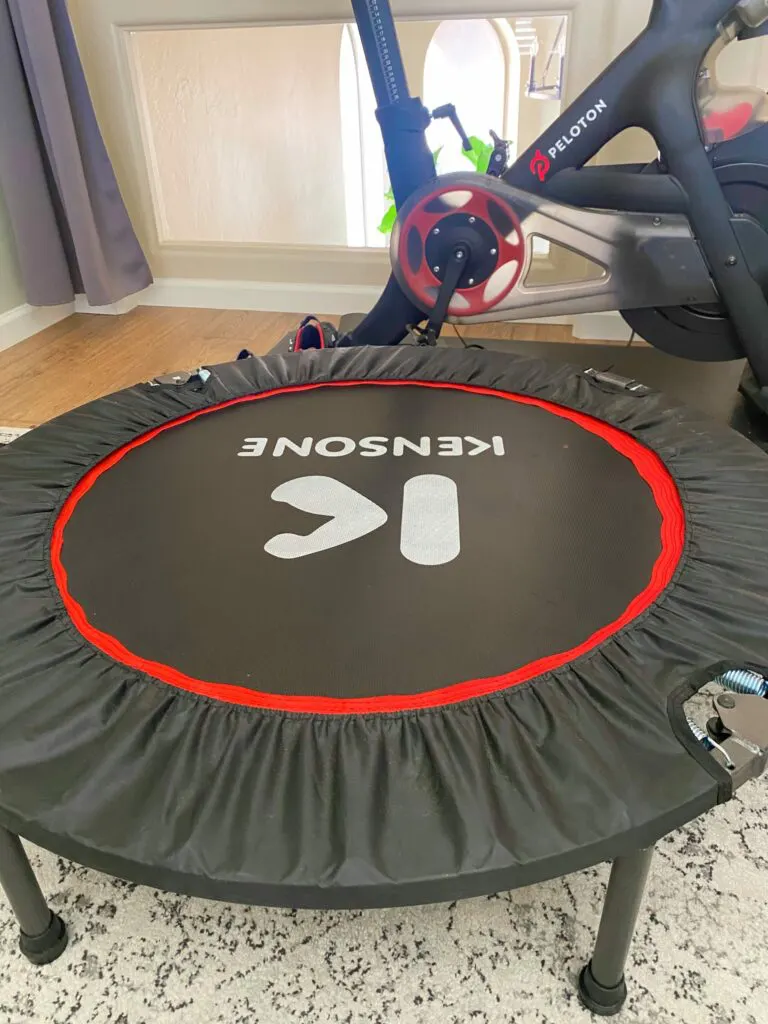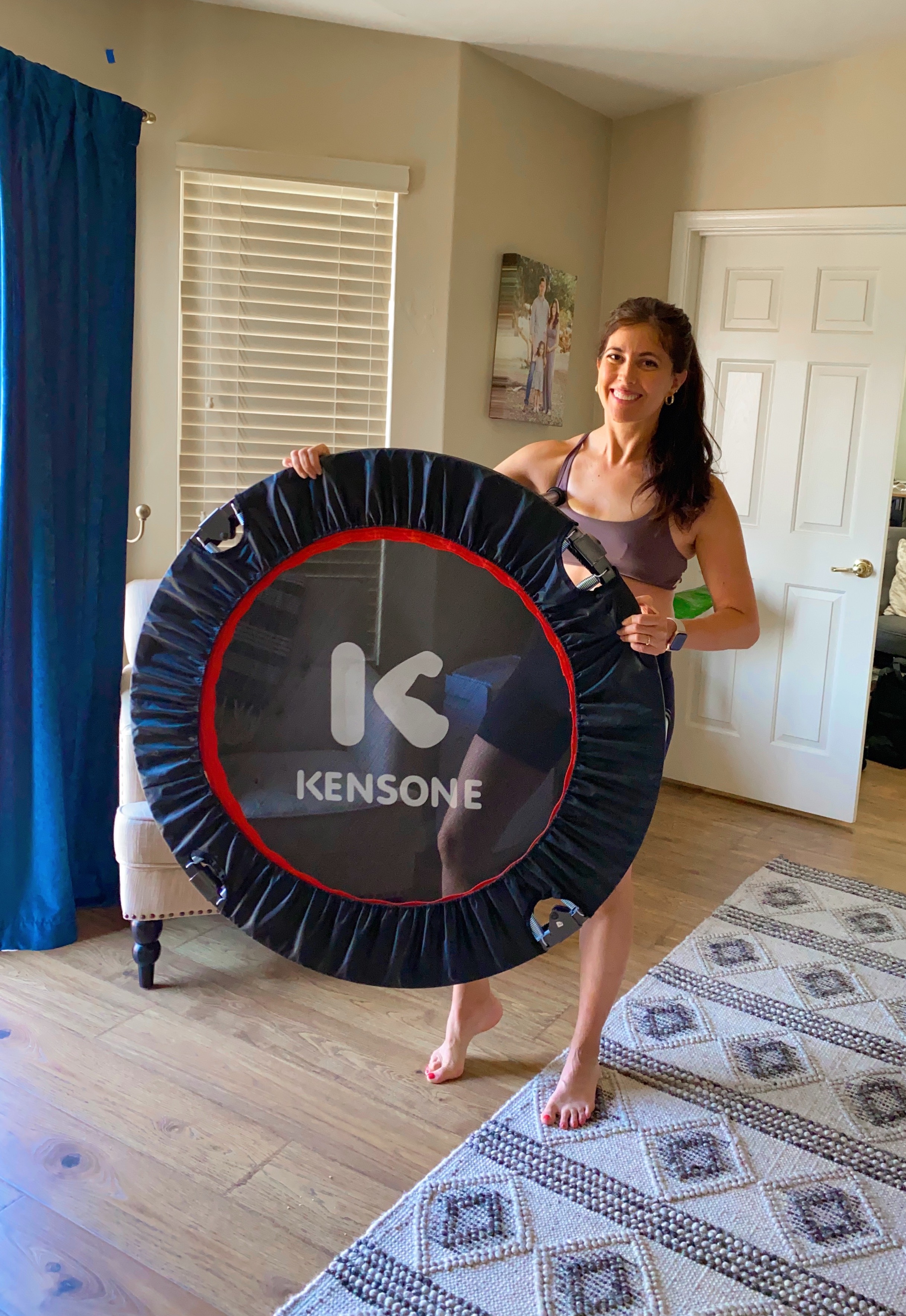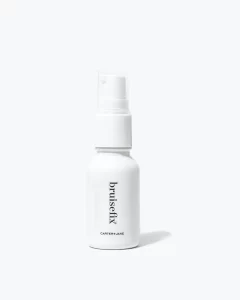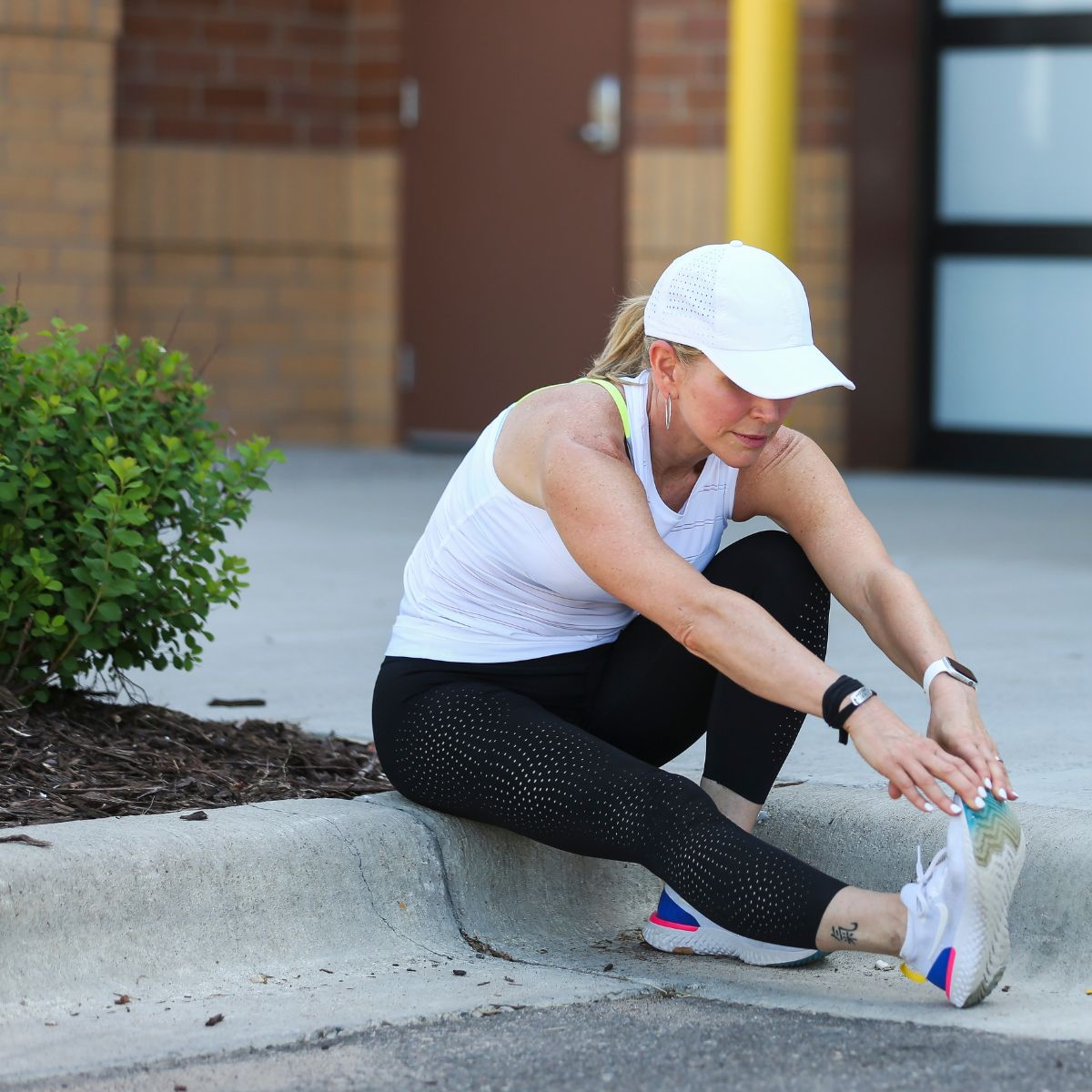Sharing my thoughts on rebounding and why it’s a fun addition to my wellness routine.
Hi friends! Hope you’re having a lovely morning! We’re headed to Hawaii for a bit! I’ll share more of the fun in upcoming posts and you can always find me on IG stories.
Today, I wanted to chat about rebounding since quite a few friends have asked me about it.
Rebounding is one of my absolute favorite ways to stay active and have fun while working out. If you haven’t tried it yet, you’re in for a treat. Today, I wanted to chat about rebounding, explore its potential benefits, and share some ways to incorporate it into your routine.
(My rebounder is here!)
Why I love rebounding
What is Rebounding?
Rebounding involves bouncing on a mini-trampoline, also known as a rebounder. It’s a low-impact exercise that can be done at home or in a fitness class. The up-and-down motion of bouncing is not only fun but also effective in working out various muscle groups, improving balance, and boosting cardiovascular health.
Rebounding can be traced back to NASA, where astronauts used it to regain bone density and muscle mass after returning from space. The unique gravitational force experienced during rebounding is said to be 68% more effective than jogging, making it an efficient workout option. Plus, it’s accessible to people of all ages and fitness levels.
Potential Benefits of Rebounding
Cardiovascular Health:
Rebounding gets your heart rate up, which helps improve cardiovascular health. This aerobic exercise strengthens the heart, improves circulation, and helps lower blood pressure. Regular rebounding sessions can enhance overall cardiovascular endurance, making everyday activities easier and more enjoyable.
Lymphatic System Support:
The bouncing motion stimulates lymphatic flow, aiding in detoxification and immune function. Unlike the cardiovascular system, the lymphatic system doesn’t have a pump. Rebounding helps move lymphatic fluid through your body, flushing out toxins and waste products, which can boost your immune response and overall health.
Low-Impact Exercise:
It’s gentle on the joints, making it a great option for those with joint concerns or recovering from injuries. The trampoline mat absorbs much of the impact, reducing stress on the knees, hips, and spine. This makes it a safe and effective exercise for individuals with arthritis or those recovering from surgery.
Improved Balance and Coordination:
Regular rebounding helps enhance balance and coordination. The unstable surface of the rebounder challenges your body to maintain stability, improving proprioception and neuromuscular coordination. This can help prevent falls and improve overall functional fitness.
Muscle Toning:
It engages multiple muscle groups, including the core, legs, and glutes, helping to tone and strengthen them. Each bounce requires the engagement of the abdominal muscles, quads, hamstrings, calves, and glutes, providing a full-body workout that sculpts and defines your muscles.
Mental Health Benefits:
The fun, rhythmic motion can boost your mood and reduce stress. Physical activity releases endorphins, the body’s natural mood elevators. Rebounding can also be a meditative experience, helping to clear your mind and reduce anxiety, making it a perfect addition to your mental wellness routine.


(rebounder is here)
How to Use Rebounding in Your Wellness Routine
Start Slow: If you’re new to rebounding, begin with short sessions (5-10 minutes) and gradually increase the duration as your body adapts. It’s important to allow your muscles and joints to get used to the new movement. Start with gentle bounces and progress to more vigorous exercises.
Warm-Up: Always start with a gentle warm-up to prepare your muscles and joints for the workout. Begin with light bouncing and arm swings to get your blood flowing and your body ready for more intense movements. This helps prevent injuries and ensures a more effective workout.
Mix It Up: Incorporate different movements like jogging in place, jumping jacks, and twists to keep your routine varied and challenging. Adding variety prevents boredom and targets different muscle groups. You can also incorporate hand weights or resistance bands to increase the intensity of your workouts.
Stay Consistent: Aim for regular sessions, about 3-4 times a week, to reap the full benefits. Consistency is key to seeing improvements in your fitness level and overall health. Create a schedule that fits your lifestyle and stick to it, even if it means shorter sessions on busy days.
Listen to Your Body: Pay attention to how your body feels and adjust the intensity and duration as needed. If you experience pain or discomfort, take a break and modify your movements. Rebounding should be a fun and enjoyable activity, not a source of stress or injury.
Pros
Fun and enjoyable workout:
Rebounding feels more like play than exercise, making it easier to stick with.
Can be done at home with minimal equipment:
A rebounder takes up little space and can be used indoors, making it a convenient workout option.
Suitable for all fitness levels:
Whether you’re a beginner or an experienced athlete, rebounding can be adjusted to match your fitness level.
Supports cardiovascular and lymphatic health:
Regular rebounding sessions can improve heart health and boost your immune system.
Low-impact, gentle on joints:
The trampoline mat absorbs impact, reducing stress on your joints and preventing injuries.
Cons
Requires space for a rebounder:
While compact, a rebounder still needs some space for safe use.
May not be suitable for those with certain health conditions (consult a doctor first):
Individuals with certain medical conditions should seek medical advice before starting rebounding.
Initial cost of purchasing a quality rebounder:
Investing in a high-quality rebounder can be expensive, but it’s worth it for safety and durability.
Pelvic Floor Concerns
While rebounding is generally low-impact, it’s important to be mindful of your pelvic floor health. The bouncing motion can put pressure on the pelvic floor, so:
Start Slowly: Begin with gentle bounces and gradually increase intensity. This allows your pelvic floor muscles to adapt to the new movement.
Engage Your Core: Focus on engaging your core muscles to support your pelvic floor. Strong core muscles can help stabilize and protect your pelvic floor during rebounding. Make sure that you’re not holding your breath!
Seek Advice: If you have existing pelvic floor issues, consult with a pelvic floor specialist before starting rebounding. They can provide personalized guidance and exercises to strengthen (and relax!) your pelvic floor.
What to Look for in a Rebounder
Quality and Durability: Invest in a high-quality rebounder that can withstand regular use. Look for a sturdy frame, strong springs or bungee cords, and a durable mat.
Safety Features: Look for features like non-slip surfaces and sturdy frames. Safety is paramount, especially when bouncing at high intensity.
Comfortable Mat: Ensure the mat provides enough cushioning for a comfortable bounce. A well-cushioned mat reduces impact on your joints and makes your workout more enjoyable.
Weight Capacity: Check the weight limit to make sure it suits your needs. Choose a rebounder that can support your weight plus any additional equipment you might use.
Foldable Design: If space is an issue, opt for a rebounder that can be easily folded and stored. This makes it convenient to use and store, especially in smaller living spaces.
Disclaimer:
Always consult with a healthcare professional before starting any new exercise routine, especially if you have pre-existing health conditions or concerns. Rebounding should be done mindfully and with proper technique to avoid injury.
Incorporating rebounding into your fitness routine can be a game-changer for your overall wellness. Start slowly, listen to your body, and enjoy the fun, energizing benefits of this unique workout!
Have you tried rebounding? Is this something you would like to add into your routine??
xo
Gina
#love #rebounding #Fitnessista







.JPG)




















